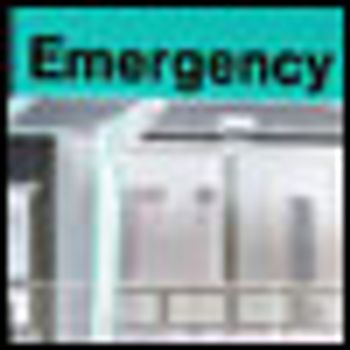
In this blog, Dr Pols reviews The Politics of War Trauma: The Aftermath of World War II in Eleven European Countries, by Jolande Withuis and Annet Mooij (eds).

In this blog, Dr Pols reviews The Politics of War Trauma: The Aftermath of World War II in Eleven European Countries, by Jolande Withuis and Annet Mooij (eds).

Should malingering be considered more likely than factitious disorder when a patient exhibits pseudologia fantastica? What condition persists for longer than 3 months, accompanies a disease process, and is associated with a bodily injury that has not resolved over time? These questions and more in this interactive quiz.

The Arizona Psychiatric Society and the American Psychiatric Association joined together to remember the victims of the Tuscon tragedy. The shooting left 6 dead and 14 others wounded, including US Rep Gabrielle Giffords, who lies in a medically induced coma recovering from a gunshot wound to the head.

Violence by patients towards staff members is an inherently complex matter for the physically and/or psychologically injured person. An expert in the field of forensic psychiatry answers a reader's question about what clinicians can do in the aftermath of an assault.

Which treatment was found to be detrimental to patients with PTSD? What is the Brøset Violence Checklist used for? These questions and more in this week's quiz.

A funny thing happened to me on the way back from the New Hampshire Governor’s Statewide Conference on Domestic & Sexual Violence. I don’t mean funny in a comedic sense, but rather in an unexpected, shocking sense.

Every year, more than 1 million children are exposed to sexual or physical abuse or neglect in the US. The research summarized here clearly demonstrates that exposure to stress before adulthood can result in persistent effects on both mental and physical health.

The mental health implications of disasters on individuals and communities are enormous. Psychiatrists play a key role in helping to mitigate and lessen the traumatic burden and in fostering resiliency efforts.

The characteristics that bring people into the caring professions are, ironically, the very factors that make them vulnerable to vicarious trauma and job burnout. It is our responsibility to ensure that these adverse outcomes are minimized among those who have chosen such a career.

The recent disaster that trapped 33 Chilean miners for the past 2 months piqued my curiosity as a psychiatric researcher: how will these hearty survivors cope with the aftermath of being buried alive?

The following is a transcript of a podcast by Dr James Lake.

Since the 1980s, there have been growing concerns that chronic cholesterol depletion may actually increase noncardiovascular deaths by suicide and violence-related deaths.

A 3-year study involving over 3,000 patients used motivational interviewing to counsel adolescents about staying away from potentially violent and alcohol-related situations. It was found that these brief sessions “reduced by half the chances that teenagers would experience peer violence or problems due to drinking.”

A Federal appeals court has supported an earlier ruling by a lower court that established the unconstitutionality of gassing disruptive mentally ill inmates in their cells.

After years of war, more and more Iraquis are seeking medical care for trauma-induced mental illness. However, demand for such treatment far outpaces supply. In a country of 30 million people, only 100 psychiatrists are available to offer care.

Domestic violence emerges from a host of causes and motivations, and that each case deserves individual attention and solutions.

Neuroscientists are exploring ways to erase bad memories in patients who have experienced traumatic events. This possibility raises ethical concerns: Is it ethical to erase a memory or flashback and the feelings associated with that moment to alleviate suffering, or should clinicians focus on therapies such as CBT and EMDR (Eye Movement Desensitization and Reprocessing) to help patients cope with a trauma?

Many European-born Israelis who lived through the Holocaust were subject to severe starvation, extreme mental stress, exposure to a variety of infectious agents, and hypothermia. Perhaps it is no coincidence that these Jews now have higher rates of all types of cancers-especially breast and colon cancer-than other Jewish or non-Jewish ethnic groups who currently live in Israel. The authors of a study recently published in the Journal of the National Cancer Institute comment that experiences during WWII appear to have had a direct impact on the long-term health of survivors.

Army personnel responsible for supervising the Army psychiatrist now accused of the November 5, 2009 shooting rampage at Fort Hood, Tex, may find themselves accused of failing to follow Army policies and regulations and taking appropriate actions.

Hy Bloom provided an expert psychiatric report in a multiple murder case in which the accused, who had schizophrenia and depression, had killed his wife and 2 children. Before the murders, the accused had been seeing a psychiatrist and family physician for treatment of the mental disorders.

While violence is often portrayed in the media as related to persons with mental illnesses, there are limited research data to support this idea. This article reviews laws and obligations for mental health professionals.

Respecting the article “Abortion Trauma Syndrome” by Arline Kaplan, I would note the irony of the claim that this syndrome is “conceived by anti-abortion activists to advance their cause,” given the obvious pro-abortion attitude of everyone associated with Kaplan’s article.

This is the third and final installment in a series on biophysical mechanisms of functional magnetic resonance imaging (fMRI) technologies. My overarching goal has been to explain why great care must be exercised when interpreting data derived from these magnets. The inspiration for the series came as I was reading a magazine article while waiting for a plane to take off-my reaction to what I read may have resulted in a bit of trauma to the seat pocket in front of me.

Abortion trauma syndrome is a fabricated mental disorder conceived by anti-abortion activists to advance their cause and is not a scientifically based psychiatric disorder. So said 2 psychiatrists at the American Psychiatric Association’s recent annual meeting in San Francisco.

Many refugees have been victims of severe violence that has profoundly affected their physical, psychological, and spiritual lives.